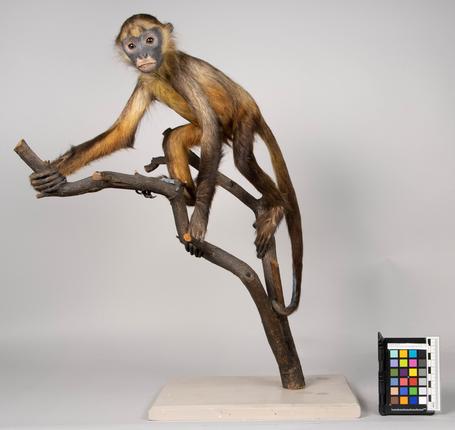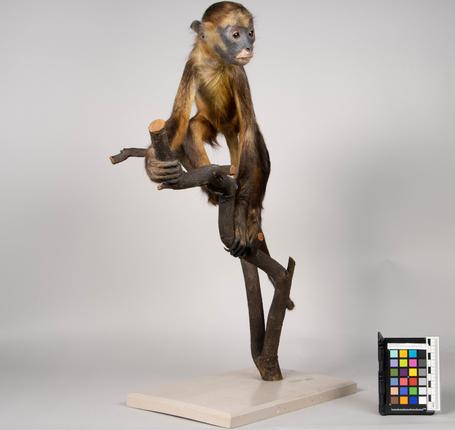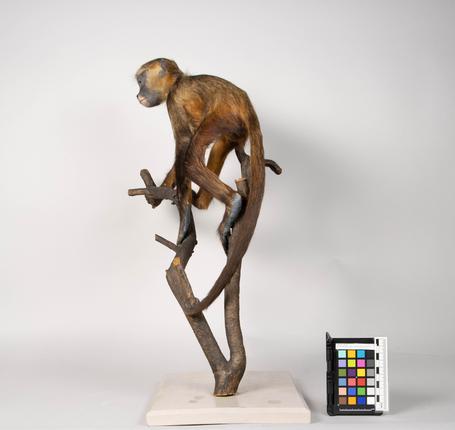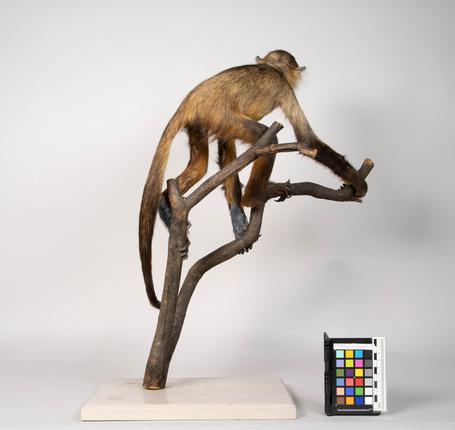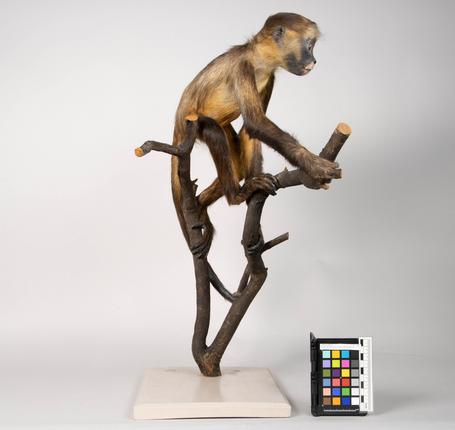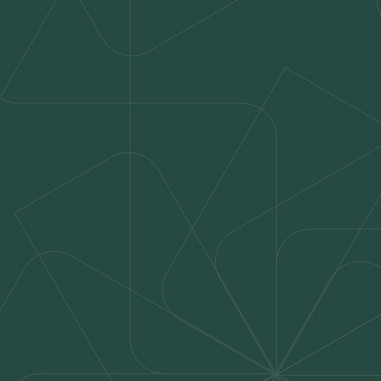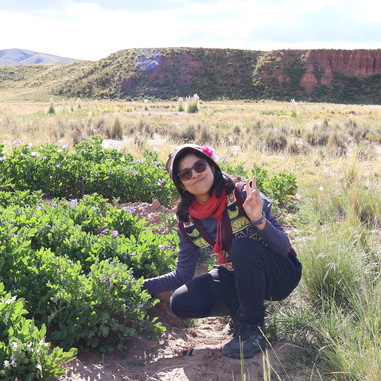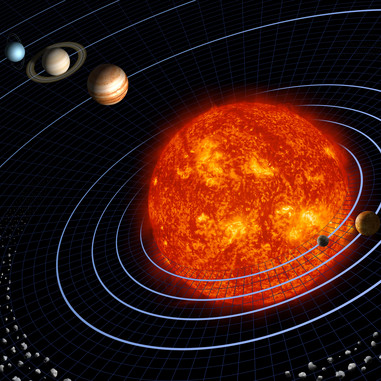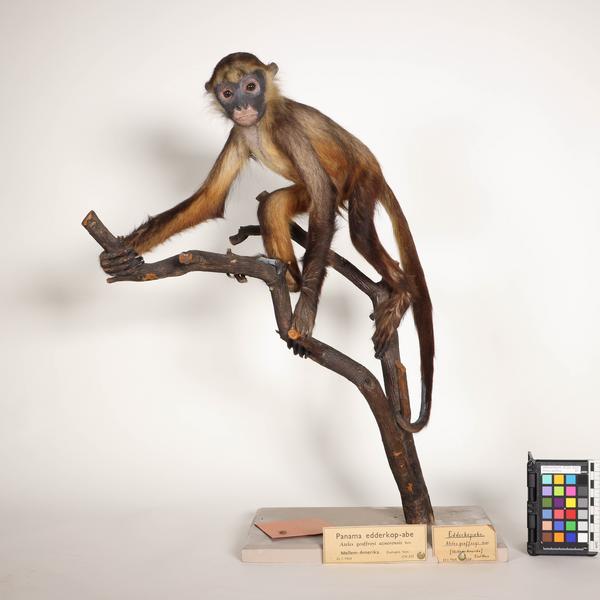
Treatment of a spider monkey
By Nicole Feldman
The black-handed spider monkey, Ateles geoffroyi, is a species of spider monkeys found primarily in Central America. Their arms are much longer than their legs, and have a prehensile tail (longer than their bodies) that can support the weight of the monkey. Often they are seen hanging and swinging from branches by their tail, appearing "spider like". This specimen will be on view in the Canopy case in the Biodiversity Gallery in the new museum.
Condition
The spider monkey arrived to the lab in mostly good condition and was securely attached to its habitat branch mount. However, there were a few missing parts, as well as loss of fur revealing tears and open seams in the skin.
- Loss of claws on the first and third digit of the left hand, and the second and fifth digit of the right foot.
- The stitching on the ventral surface running from the neck to pelvic region was visible and had opened from the center of the stomach down to the pelvis.
- Tear in the skin on the back of the left calf with slipping of the fur in this area.
- Some loss of the reddish-brown fur on the lower portion of the left leg.
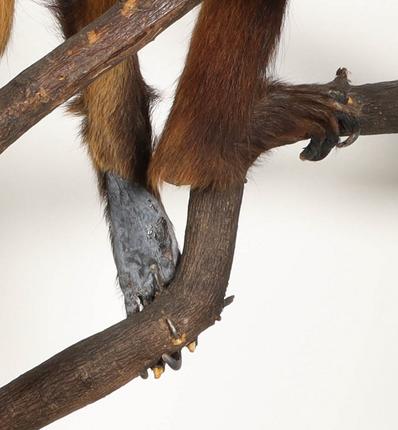
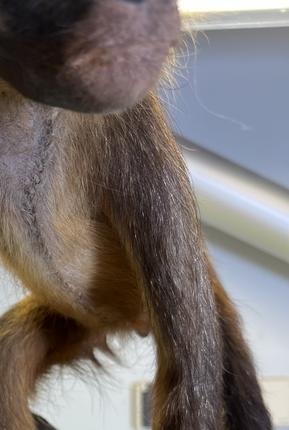
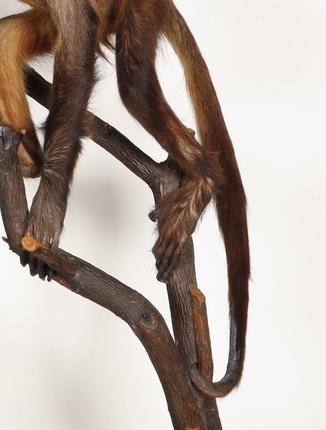
Treatment
The taxidermy mount was first cleaned with a HEPA filtered vacuum with a micro fiber cloth attachment, as well as a small fan brush. Dirt and grime on the glass eyes and painted skin was removed with cosmetic sponges and rolled cotton swabs lightly dampened in a 70:30 ethanol: deionized water.
Covering visible stitching on the ventral surface
The visible stitching on the ventral surface (neck to pelvic region) was covered with a combination of faux fur fills and Japanese tissue paper toned with QoR paints. The faux fur fills were made using ramie tops (nettle fiber, vegan eco fiber), trimmed and shaped with small scissors and colored with an airbrush and QoR pigments in 70% ethanol. The faux fur was adhered along the length of the stitching with 1:1 Lascaux 303 HV Lascaux 498 HV. To set down the faux fur and blend with the original fur, polyethylene plastic was wrapped around the torso and left overnight. Tweezers were used to further blend the faux fur, along with a brush lightly dampened in deionized water.
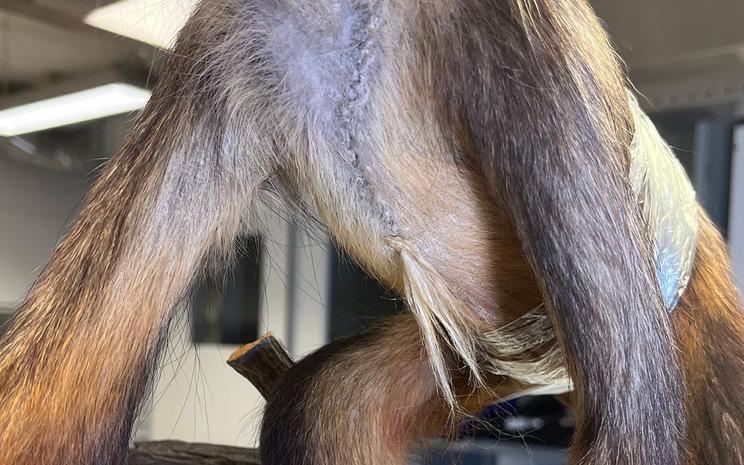

Covered tear on the left leg and faux fur fill
The skin tear on the left calf was covered with Japanese tissue paper toned with QoR paints in 70% ethanol and adhered with 1:1 Lascaux 303 HV Lascaux 498 HV. Faux fur was adhered over the Japanese tissue paper with the method described above.
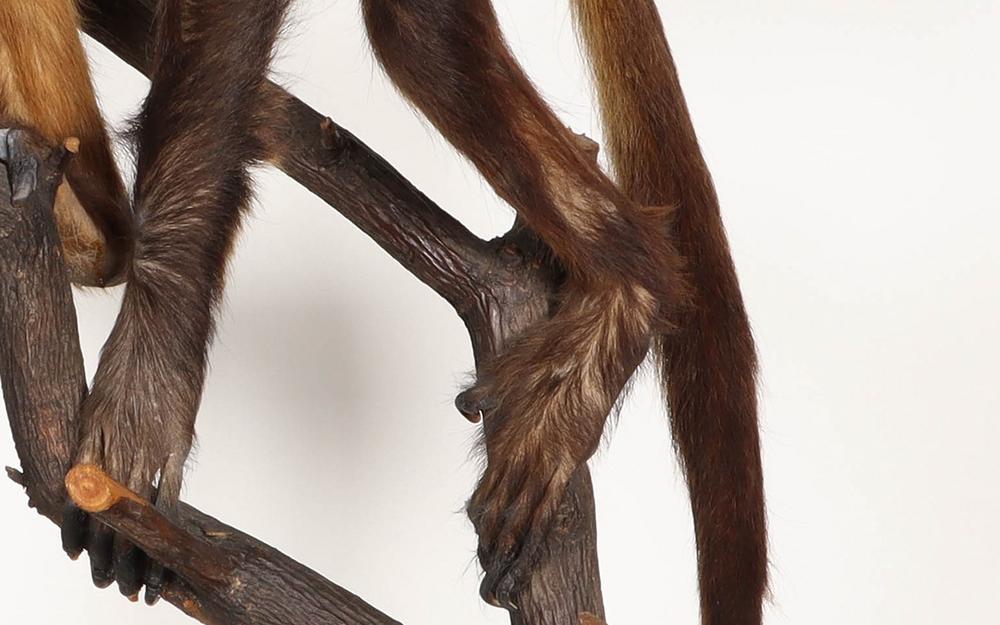
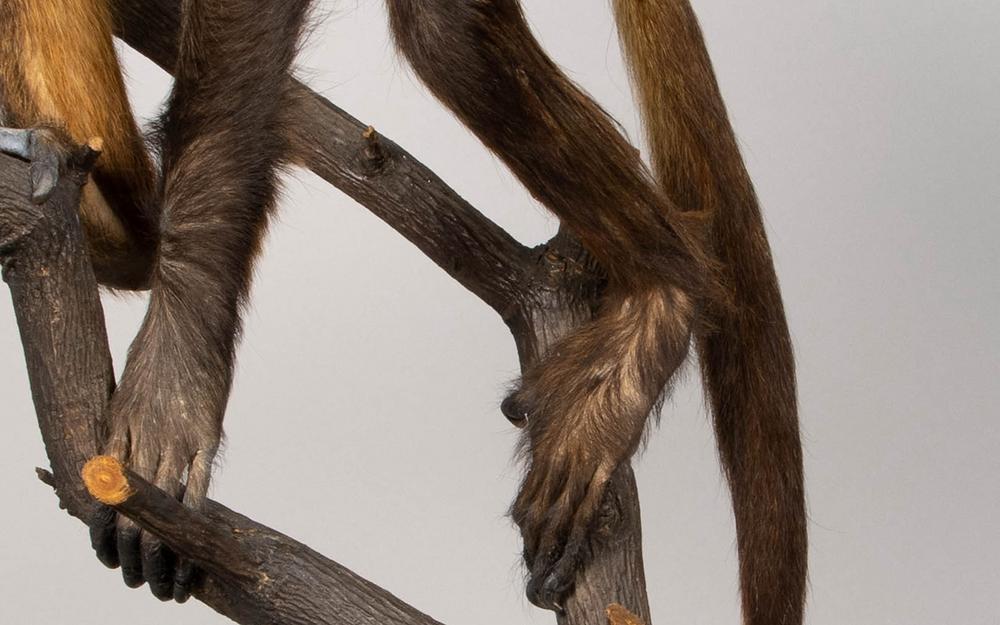
Recreating missing claws
Recreated missing claws - the first and third digit of the left hand, and the second and fifth digit of the right foot – with B-72 in acetone bulked with glass micro balloons and toned with dry pigments. The fill was shaped on the hand and foot with a spatula, and further refined with sandpaper once dry.
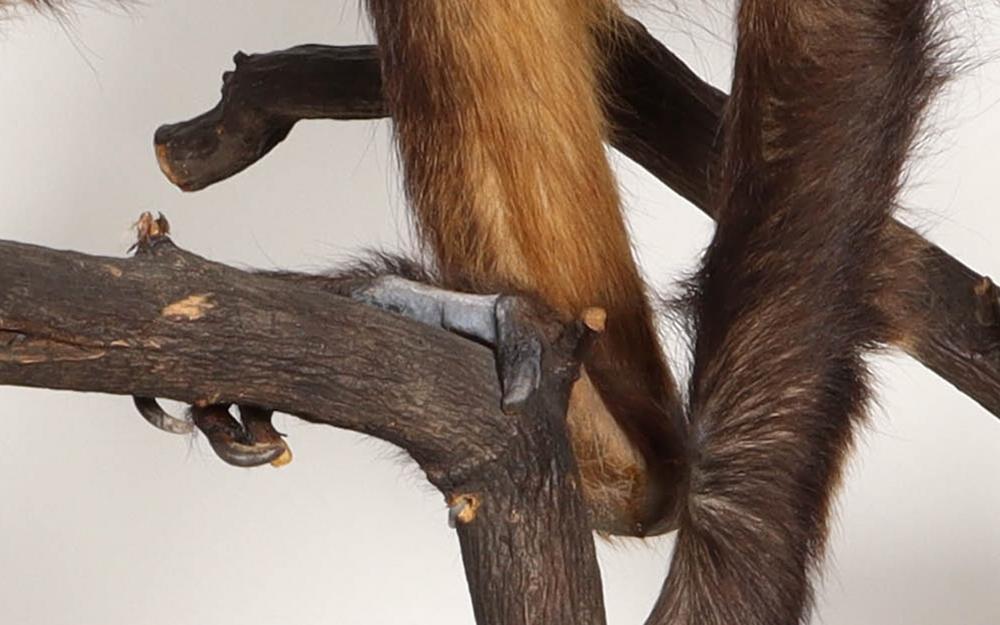
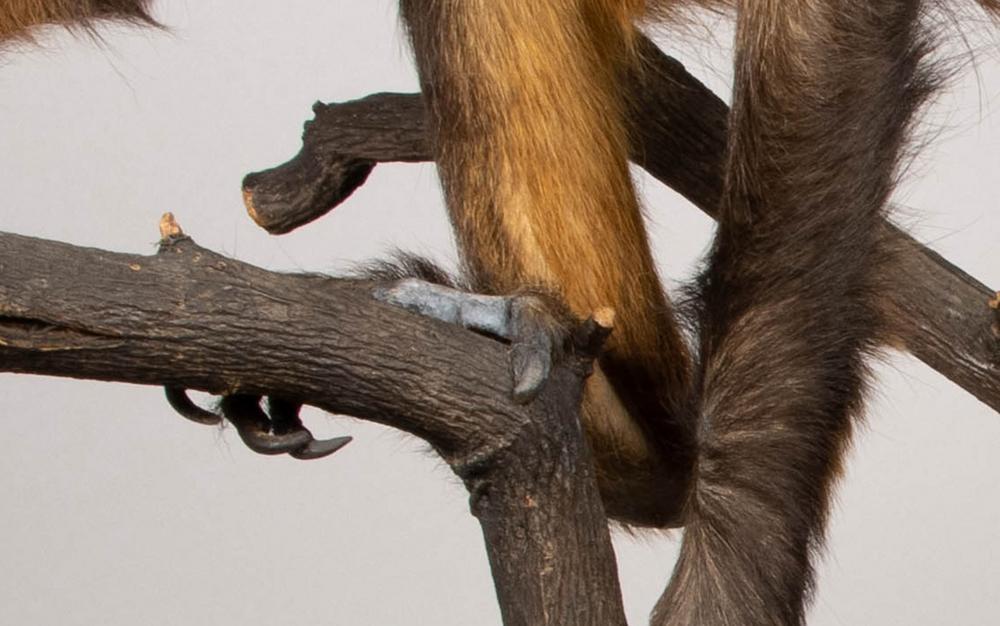
The golden spider monkey has now undergone expert treatment in the conservators' workshop, and is ready to be displayed in the new museum. This specimen will be on view in the Canopy case in the Biodiversity Gallery.
